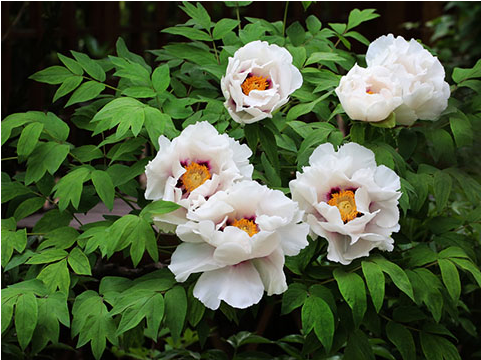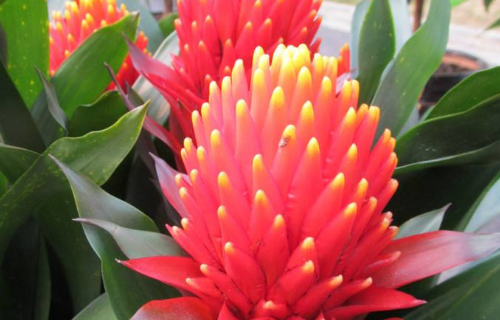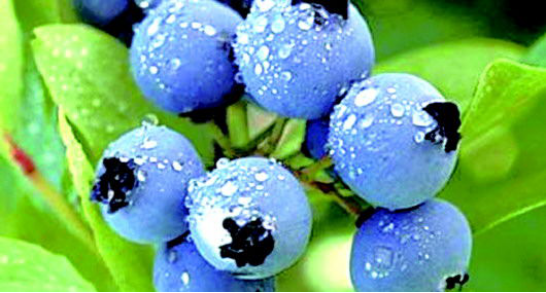Matters needing attention in the cultivation of Paeonia suffruticosa
1. Moisture content
Purple spot peony has strong drought resistance. After the newly planted purple-spotted peony plants meet certain water requirements, they grow to a deeper degree of rooting, and then only need to be watered 2 or 3 times a year, but usually pay attention to drainage, purple-spotted peony is afraid of waterlogging.
two。 Light
Purple spot peony is a sunshine plant, but it is not better and better. In July and August, however, they can not be exposed to the sun, and they need proper shade, otherwise there will be withered leaves. Purple spot peony flowering, too strong light will also shorten the flowering period, should also be appropriate sunshade.
3. Soil
Purple spot peony is resistant to salt and alkali and has good adaptability, but the fertile soil is certainly better, and the flowers will be of great ornamental value.

This is the end of today's introduction, thank you for reading, like to collect and share the four seasons plant network yo!
Culture methods and matters needing attention of Paeonia suffruticosa
Culture method of Paeonia suffruticosa
Purple spot peony likes light and belongs to long sunshine plant. But in the hot July and August to do a good job of shading and ventilation, otherwise it is easy to have withered leaves, pay attention to the flowering period of purple spot peony, too strong light will also shorten the flowering period, can be properly shaded.
Moisture content
Drought resistance, generally watered 2-3 times a year. For fear of waterlogging, we must pay attention to timely drainage.
Soil
Paeonia suffruticosa has low requirements for soil, saline-alkali resistance and good adaptability to soil. of course, it grows better in the soil with better fertility, and the flowers are more ornamental.
Reproduction method
It is often propagated by ramet, sowing, grafting, etc.
Matters needing attention in the Culture of Paeonia suffruticosa
Purple-spotted peonies planted in the south of the Yellow River and in low-lying areas need to be drained well, especially in the rainy season to avoid flooding.
The soil in Northeast China is relatively loose, so the infiltration of surface water is relatively fast, so for the newly planted purple spot peony, sufficient water supply must be ensured. Generally, after two years, when the new root of purple spot tree peony is deeply rooted, there is no need for too much watering.
Cultivation method of purple-spotted bluebells points for attention in culturing purple-spotted bluebells
Purple Campanula flower as its name, its bell-shaped flowers have little purple patches, not only have ornamental effect, its whole grass can also be used as medicine. Today we are going to talk about the breeding methods and matters needing attention of purple bells and bells.
Culture methods of purple bells and bells
First, sowing time: Rabdosia purpurea is a cool plant, it is best to start sowing at the end of summer, grow for several months in winter, and complete the whole growth process in the following spring. In this process, the lighting time should be at least 14 hours a day, and the viewing period is longer, about 30 days from bud appearance to flowering. If it is treated with sunshine for a long time, it should be sown in November and sown in January and February under natural conditions, so that summer can grow.
Second, the method of reproduction: the propagation of purple bells is usually sown and propagated, and the sowing time is from August to September in autumn. Sow the prepared seeds in a shallow basin or wooden box and place them in a cool place. The seeds of purple bells are small, so you can't cover the soil after sowing, just don't see the seeds. When watering the seedlings, you can use a thin-eye pot or a sprayer to spray water so as not to flood the seeds and rot the roots.
Third, seedling treatment: after the seedlings grow roots, they can be transplanted, which is still carried out in a shallow basin. Be careful not to break the root during the transplant. When the seedlings grow to a height of almost 5 centimeters, they can be transplanted to a 10-centimeter-high pot. wait until the roots of the seedlings are full, and then change the pots for 2 or 3 times until the last flowering year, and then transplant them to the flower bed or the ground.
Fourth, fertilization and watering: the purple bells should maintain a relatively high relative humidity before the radicle appears, and the substrate should also be relatively moist. If necessary, the newborn seedlings can be covered with a layer of coarse-grained vermiculite to moisturize. If you want the seedlings to grow fast, you can apply 30 to 50PPM of calcium and nitrogen fertilizer, and then apply calcium fertilizer on its basis to make it grow fast.
Fifth, light treatment: purple bells like long sunshine, sunshine 14 hours a day can naturally blossom, if you want to advance flowering, only need 4 hours to break 30 days of dark treatment. Purple bells do not need growth regulation and coring treatment, the appearance of bluebells is messy in the early growth process, but will naturally adjust neatly and compactly in the later growth process, so there is no need for special adjustment.
Matters needing attention in the culture of Rabdosia purpurea
It takes two winters for bluebells to blossom, so it takes patience to cultivate, especially in the hot summer weather, which can easily cause the plant to wither. Potted bluebells can not be placed on the back of high-rise buildings to prevent sun exposure, and timely strengthen the foliar spray and cooling. Purple bell grass is also a positive plant, so it can not be placed in a shady place for a long time, lack of light.
- Prev

How to raise Torch Flower
Torch flowers in soil are mostly cultivated in open field or potted. When potted plants should be selected in the lee. Before planting, the soil should be deeply ploughed and organic fertilizer should be applied. Potting requires sandy loam with deep soil layer, fertile soil and good drainage. Light Torchflowers love warm, sunny environments
- Next

Planting methods of blueberries
First, light is essential for the growth of blueberries. Long-term lack of light will lead to fewer flower buds of blueberry plants and affect fruit quality. At the same time, proper pruning of plants and timely cutting of old branches are beneficial to the photosynthesis of potted blueberries and help to produce beautiful fruits.
Related
- Fuxing push coffee new agricultural production and marketing class: lack of small-scale processing plants
- Jujube rice field leisure farm deep ploughing Yilan for five years to create a space for organic food and play
- Nongyu Farm-A trial of organic papaya for brave women with advanced technology
- Four points for attention in the prevention and control of diseases and insect pests of edible fungi
- How to add nutrient solution to Edible Fungi
- Is there any good way to control edible fungus mites?
- Open Inoculation Technology of Edible Fungi
- Is there any clever way to use fertilizer for edible fungus in winter?
- What agents are used to kill the pathogens of edible fungi in the mushroom shed?
- Rapid drying of Edible Fungi

